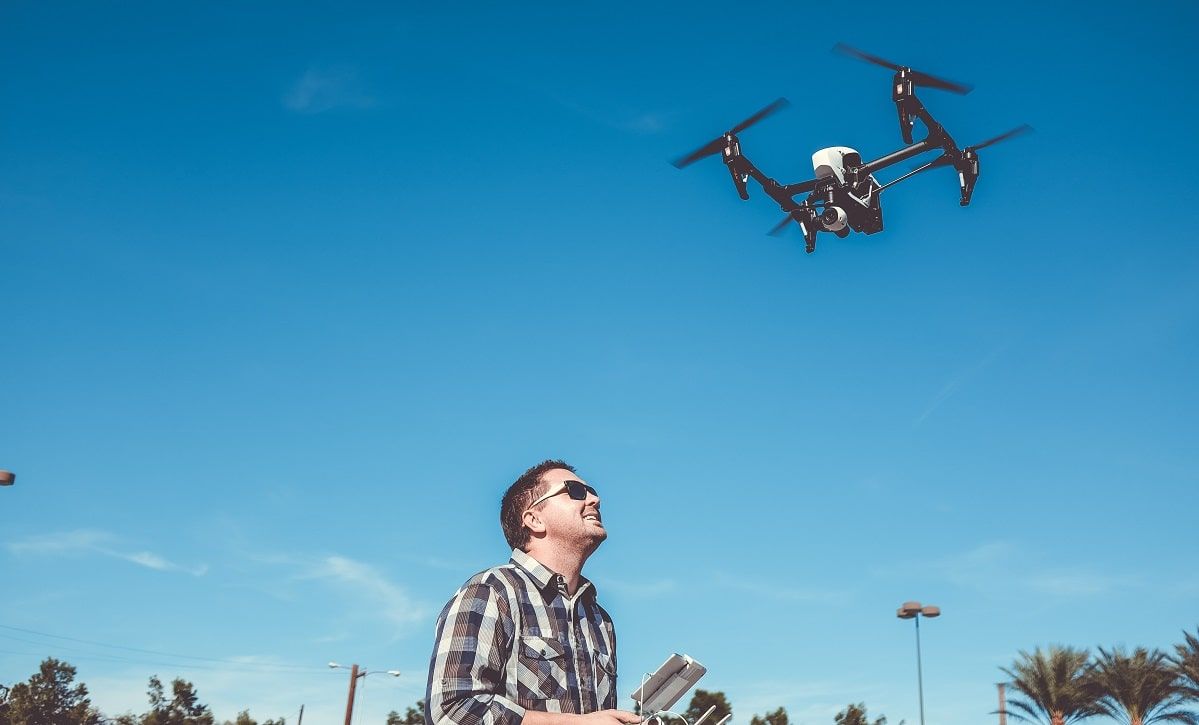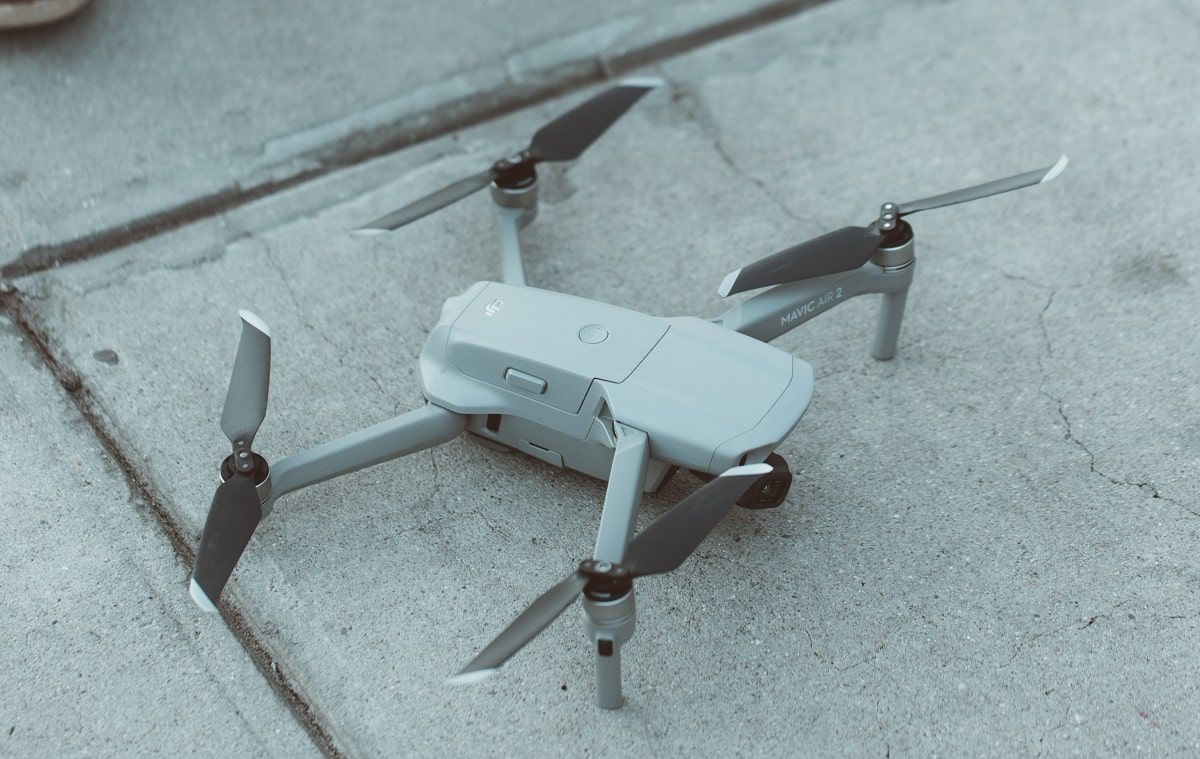How Do You Fly a Drone? What You Need to Know to Get In-Air
Rent film gear from local filmmakers.

Rent film gear from local filmmakers.
Learning how to fly and control a drone is a great skill to have, but it takes a lot of patience and practice.
If you're starting from square one, keep reading to learn how to become the master of your aircraft.
Understanding the drone controls
Understanding how to control your drone is crucial if you want to fly safely and effectively. Especially if you are a beginner, you should start with slow movements, and once you get used to your drone, you can start being a bit quicker and sharper.
Most standard drones will have the left stick control the "Yaw" and "Throttle", and the right control the "Roll" and "Pitch", but it will depend on your drone. (Something to check out before you start!)
Roll
You do this by pushing the right stick left or right. It literally rolls the drone by angling it in the desired direction, hence the name.
Pitch
This is done by moving the right stick forwards or backwards. By tilting the drone, the pitch enables it to move back and forth.
Yaw
This rotates the drone while flying to aid the moving of different directions. To do this, move the left stick left or right. Yaw is typically used in conjunction with the throttle during a flight.
Throttle
This will adjust the altitude of your drone. So to decrease, hold your left stick back, and to increase, push it forward.

Necessary pre-flight checks:
Having a safe and easy flight is simple if you go through the following checks each time you fly. Don't worry; they're not too complicated or time-consuming!
- Make sure the chance of rain is less than 10%. Flying a drone in the wet is a recipe for disaster!
- Also, make sure the wind speed is less than 20mph.
- The cloud base should be at least 500 feet. You do want to be able to see your drone while flying!
- You want to make sure that your visibility line is three statute miles.
- If you happen to be flying at dusk or dawn, check the civil twilight hours. This is after sunset or before sunrise when the sun is 6 degrees below the horizon, and it appears light enough to go out and fly.
- Establish your take-off, landing, and emergency hover zones.
- If there somehow happens to be the potential for electromagnetic interference, don't fly.
- Don't take off near tall trees, telephone wires, or any other large obstructions.
- If flying low, set up safety precautions around nearby people or animals.
- Make sure all your crew knows the flight's mission before take-off.
You also want to check all is well with your drone before take-off.
Make sure your gimbal clamp and lens caps are removed, your lenses are clean, and your drone has enough battery before you set off!
You're almost ready to go!
Step-by-step on flying a drone:
1. Find an open area for flying practice
When purchasing or beginning to use a drone, it's good to have a place in mind to use it. Make sure it's in a pretty open area, away from obstacles and crowds.
Also, check that it is legal to fly drones in your location- you don't want to break any laws!
2. Position your drone
The instruction manual on your drone will usually provide you with details of how to do this.
But always place your drone on a flat surface, out in front of you. You should repeat these simple steps until you get more comfortable flying.
3. Connect the transmitter to your drone
There's a sequence you will have to remember here. Before you switch on your transmitter, push the throttle all the way down.
Turn on your transmitter, then plug in your drone's battery. When you land, make sure to repeat these steps in reverse order.

4. Take-off (again and again)
Before you get to moving around, you may just want to use your throttle to lift the drone a couple of feet off the ground and practice landing it safely and slowly.
You can use the right stick to keep it steady but focus here on your control of the left.
Fly left/right and forward/backwards
Once you've practised taking off and landing a couple of times, it's time to start learning to rotate your drone.
Use your throttle to keep your drone at a steady height, and then use your right stick to start moving your drone.
Try and get used to moving the left and right stick in motion with one another to keep your drone steady and moving.
Fly in a square patterns
Now that you've got a grip on some basic controls and manoeuvres, it's time to learn some patterns! To fly in a square pattern, you must keep the drone facing away from you.
Push your right stick forward, then stop and hover. Push it to the right, and stop and hover again.
Then, push the stick backwards, stop, and then to the left. You've completed a basic square pattern!
Fly in a circle patterns
This one is a bit more complicated. First, use your throttle to get airborne. Decide whether you want to go clockwise or anti-clockwise.
To go clockwise: Push your right stick diagonally up to the left. After a couple of feet, keep moving your right stick along clockwise, right until it returns to its original position.
If you notice it rotating, play with the Yaw until you're happy. Make sure you practice this one a few times!
Fly continuously
This will take some getting used to since you'll have to learn how to use your left and right sticks together to maintain motion. Get airborne and use your throttle to maintain your height.
To keep flying, push your right stick forward, push it to the left or right to change direction, and keep engaging your left sick to adjust your height and rotation.
Play around with it! The more time you spend with your drone, the more you'll get to know it.
5. Prepare for landing
Make sure you choose a suitable and flat place to land and announce that you are about to land your drone.
Hover your drone above the landing zone while decreasing the speed and slowly moving it down.
Once it has touched down, turn off the drone's batteries before moving it or touching the propellers.

Top 5 flying tips for new drone flyers
1. Stay in range
Your aircraft will display a maximum range it can cover, and you should stick to this. This means the distance between your controller and the craft. Stay within your range and if interference occurs, be prepared to run and collect your drone.
2. Update software
It can be very annoying to get out on the field to find out your drone is malfunctioning, or the battery depletes quicker because you didn't update it.
Make sure before you leave the house to fly that you quickly check for updates on your drone.
3. Practice the different drone controls
The best thing you can do to get familiar with your drone is to practice the controls frequently.
Try different directions, rotations, and patterns again and again until you can do them with your eyes closed. (We do not recommend actually doing this.)
4. Have a full battery
If you want to have a long, uninterrupted flight, make sure your drone is fully charged. Only use the battery and cable that came with your drone, or if not, do check your charger's compatibility before you use it.
5. Know the rules and regulations
Before you fly, you have to register your drone with the FAA and mark it with a registration number.
This will hold you accountable if you happen to break or damage anything! There are also some general rules to follow:
- Stay under 400 feet, and keep your speed below 100mph.
- Don't fly during nighttime.
- Your aircraft has to weigh under 55 pounds.
- You must give the right of way to manned aircraft always. And keep your drone within your line of sight.
- Fly according to your community's guidelines.
- You must notify an airport if you plan to fly within 5 miles of it.
- Do not fly over people or from any moving vehicle.
Rent or subscribe to your next drone
Now that you've got to know your aircraft a little bit, it's time to learn more about why people use drones and what they can do for you. Check out our page on the uses of drones, then on piloting a drone to hone your craft.
If you're using your drone for photography purposes, check out our page on camera equipment to make sure you're using the right stuff.
And hey, if you want to actually get a drone – consider renting or subscribing to one.
About the instructor
Ása Steinars
Photographer
Iceland
Ása, is a nature photographer, videographer, drone flyer, and adventure content creator from Iceland. She started creating very early and was photographing since being a kid of 10-11 years old.
How to Fly a Drone FAQ
How to fly a drone as a beginner?
Anyone can learn to fly a drone if they are determined enough. Learn your basic controls as well as all of your safety precautions, get flying, and soon you'll no longer be a beginner!
Is it easy to fly a drone?
Once you've learned how to control your drone, practice will make flying easy as pie. In the beginning, it can seem daunting, but the more you go out and fly, the easier it will become.
How to control a drone?
You can control your drone basically through your left stick (Yaw and Throttle) and your right stick (Roll and Pitch).
Try imagining yourself as a tiny pilot in your drone; this will help you make sense of all the directions and rotations mid-flight!
Do I need a license to fly a drone?
It depends! You will need a drone license if you intend to fly it commercially. However, if you are just flying for fun, you currently do not need one.
Rent a drone from local creators.
Save up to 40%.
Global Coverage included.
https://images.wedio.com/images/listing_images/images/1949796/300x215/rent-dji-mavic-mini-on-wedio.jpg
https://www.wedio.com/en/rent/drones
https://images.wedio.com/images/listing_images/images/1915165/300x215/lej_mavic_2_pro_med_pilot_p__wedio.jpg
https://www.wedio.com/en/dji-mavic-2-pro
https://images.wedio.com/images/listing_images/images/1915165/300x215/lej_mavic_2_pro_med_pilot_p__wedio.jpg
https://www.wedio.com/en/rent/drones
https://images.wedio.com/images/listing_images/images/1934651/300x215/DSC05493-kopi.jpg
https://www.wedio.com/en/dji-mavic-air























